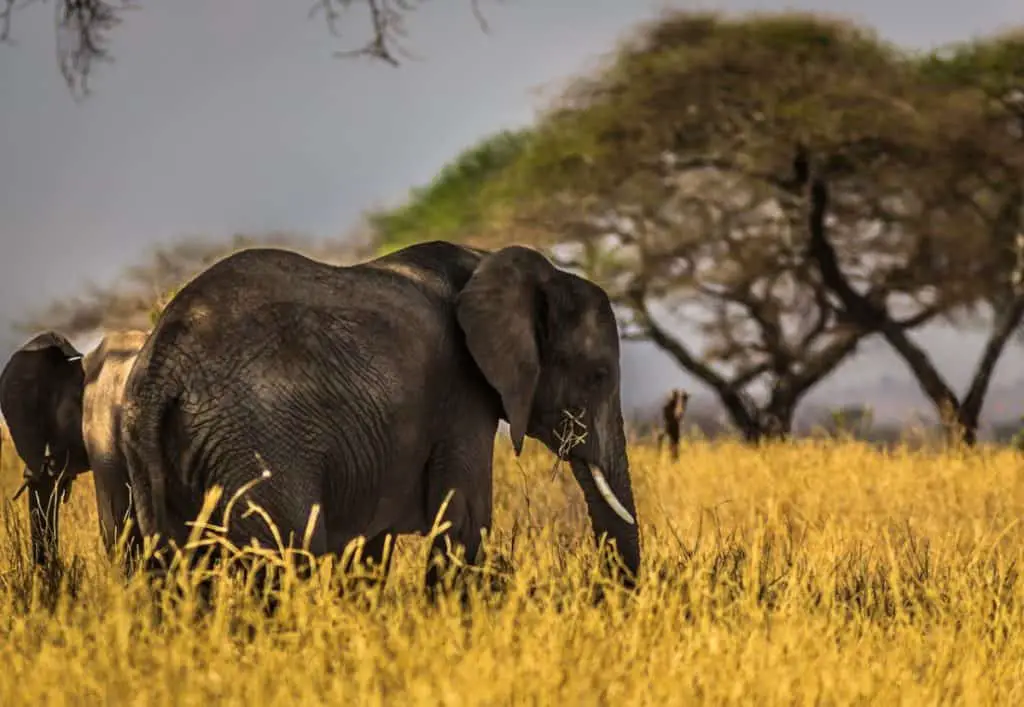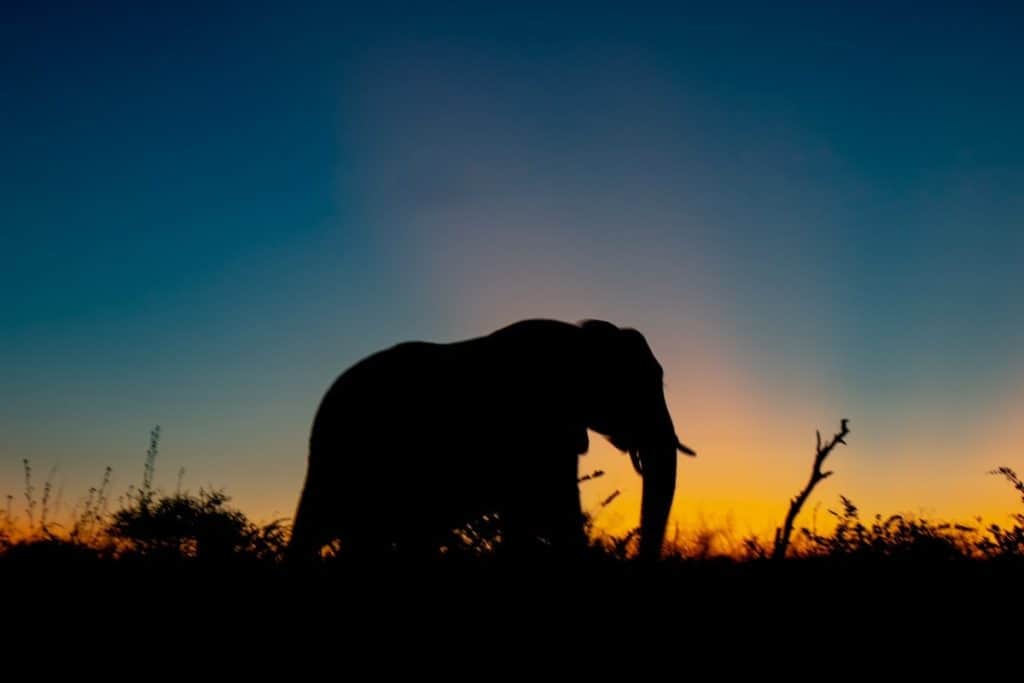
If you are interested in finding out whether elephants are black or gray then you’ve come to the right article.
As, in this article, you’ll find the exact answer to this question, and also after you’ve read the answer to the main question then I’ll cover the answers to a few more closely related questions as well to extend your knowledge further.
I hope you learn a lot from this article.
Are elephants black or gray?
Elephants are the largest extant terrestrial (or land) mammals, and they are gray, not black.
Of the three species of elephants, the African bush (Loxodonta africana), African forest (Loxodonta cyclotis), and Asian (Elephas maximus) elephants, the Asian elephant sometimes has slightly darker skin.
While they are also gray, their skin can have a slightly brown tint as well.
There aren’t any elephants that exist that have black skin.
However, elephants wallow or bathe in mud, which can become caked to their skin.
This could result in an elephant appearing to have darker skin.
Are elephants naturally black?
Elephants are not naturally black.
Their thick, baggy epidermis has a gray pigmentation.
While their hair is darker, they have very little of it, so it does not cover their skin or result in them having a darker appearance.
Environmental factors impact how light or dark an elephant’s skin looks.
They bathe in mud and dust, so, depending on the color of the soil, this can make them appear either lighter or darker.
African bush elephants (Loxodonta africana) tend to get very dusty, causing them to appear light gray.
African forest elephants (Loxodonta cyclotis), by contrast, tend to get muddy, making them appear dark gray.
Asian elephants (Elephas maximus) are naturally slightly darker than their African counterparts, but they also often experience depigmentation, which results in splotches of light with almost yellow coloration.
Are all elephants black?
There aren’t any elephants that naturally have black skin.
The natural pigmentation of their epidermis is gray.
However, when an elephant becomes caked with mud as a result of wallowing and blowing dirt on itself, it can appear to be very dark.
Elephants deliberately coat themselves in mud to create a skin barrier, which keeps them cool.
While other mammals have hair and sweat glands that help them regulate their temperature, elephants have very little hair and relatively few sweat glands.
Coating themselves with mud effectively serves as a sunblock.

Are all elephants gray?
All elephants naturally have gray or grayish-brown skin pigmentation.
Some experience depigmentation, which causes light spots.
Although extremely rare, elephants can be born with albinism, which is a lack of melanin or skin pigment.
An albino elephant will appear to have white or pink skin.
Elephants naturally wallow, or bathe in dirt or dust, to cool themselves.
This creates a muddy layer on their skin that can make them appear lighter or darker, depending on the soil in their environment.
What is the real color of elephants?
Although elephants can appear to range from light tan to dark brown, their skin, however, is gray.
Apparent color variations are mostly due to the mud and dust that Elephants coat themselves with.
Rare albino elephants lack melanin, which is what ordinarily accounts for skin pigmentation.
Since they don’t have any, their skin appears to be white.
What color are African elephants?
Both species of African elephants, the forest elephant (Loxodonta cyclotis) and the bush, or savanna, elephant (Loxodonta africana) are gray, though forest elephants tend to be slightly darker than the bush elephant.
They are also smaller than the bush elephant.
Like their Asian counterparts, both species of African elephants have sparse, coarse hair and baggy skin that becomes permeable when it is very hot which aids in regulating their body temperature.
African elephants also have larger ears than Asian elephants, which they use to fan themselves.
Coincidentally, their ears resemble the shape of the continent of Africa.
Are elephants black when wet?
Elephant skin is naturally gray, but it will generally appear darker when it is wet.
Since elephants don’t have much hair, their color is a function of the pigmentation of their skin and certain temporary environmental factors.
For example, elephants coat themselves in mud and dust to keep themselves cool.
This can change their apparent color, depending on the type of dirt in which they have wallowed.
When they become wet, this artificial barrier may get washed away, allowing their natural gray skin color to show again.
Check out the video below if you want to see baby elephants take their first bath.
Are black elephants real?
No truly black-skinned elephants exist.
Although they can appear to range in color, from light tan to dark brown, their skin is always gray.
Most color variations are caused by the mud and dust that Elephants coat themselves with to stay cool.
If an elephant were to wallow in rich, dark, wet soil then this could make them appear almost black.
However, as the mud dried, it would lighten in color.
The phrase “black elephant” has an idiomatic meaning that is derived from two older idioms: “a black swan” and “the elephant in the room”.
The first is used to refer to something so unexpected or unbelievable that its discovery results in a paradigm shift.
The idiom arose because, at one time, Europeans thought that all swans were, by necessity, white.
They couldn’t imagine or anticipate the possibility of a black swan.
The second idiom refers to something obvious and incapable of being ignored, yet no one wants to talk about it.
Combining these two idioms, a “black elephant” is unimaginably bad and obvious, yet no one wants to address it.
The metaphor is often used about climate change.

Are there blue elephants?
There aren’t any blue elephants that exist on this earth.
All three existing species of elephants are gray or grayish-brown.
However, in rare cases, elephants produce albino offspring, which lack skin pigmentation and thus have white or pinkish skin.
Because elephants wallow or bathe in mud, their skin is often stained and takes on the color of the soil.
This can impart a variety of tints and shades, including reddish brown and dusty yellow, but not blue.
Although there are no real blue elephants, both the phrase, “blue elephant”, and the depiction of elephants as blue can be found in a variety of cultures and contemporary media.
For example, Khan Kluay is the titular character of the 2006 animated film, “The Blue Elephant” (this movie is for kids).
If you want to see a quick trailer of “The Blue Elephant” movie then you should check out the video below.
